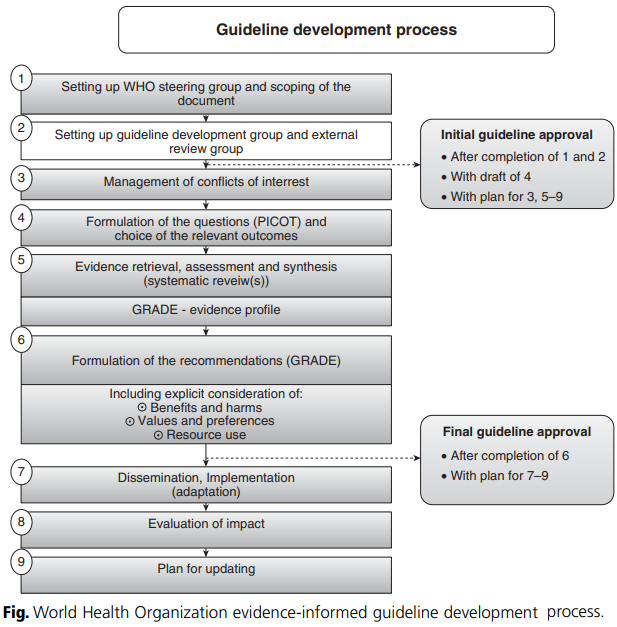The primary objective of food fortification policy and programs is generally the “protection of public health and safety”. The ‘protection’ indicates the benefits associated with mandatory food fortification. On the other hand, ‘public health and safety’ refers to the risk of harm resulting from excessive nutrient intake. These two dimensions create ambiguity for the decision makers. The exposure to the raised level of nutrients can also have ethical consequences. The decision on fortification policy should be based both on the evidence and ethics.
The food fortification policy must be informed by sound scientific evidence. We generally use a term: evidence-informed-policy-making decision. There should be two types of evidence: evidence of food fortification to ‘promote’ public health; and evidence to ‘protect’ public health.
The evidence hierarchy method is used to evaluate the quality of evidence. For example, evidence based on randomized controlled trials (RCTs) is considered high quality. The process for developing evidence-informed guidelines was developed by WHO (2009). It consists of a nine step procedure as shown in figure below.

There are two challenges associated when such evidence is used to inform food fortification policy-making:
- The comparison of the relative benefits and risks of available policy interventions for addressing inadequate nutrient intakes.
- Demonstrating food fortification efficacy does not necessarily mean it is effective
In the context of food fortification program, the risk may relate both to an inadequate intake of a nutrient and an excessive intake of a nutrient. What is important to consider is the current nutrient intake distribution across the population and how will different food fortification scenarios affect dietary intake distributions? Basically, we will need to carry out nutritional risk analysis (comprising of nutritional risk assessment, nutritional risk management and nutritional risk communication processes). Nutritional risk assessment component should incorporate a science based process for forecasting the impact of food fortification regulations on public health and safety. The work preferably should be carried out by the relevant scientists and should have all the four components of hazard identification, hazard characterization, intake (exposure) assessment and risk characterization. The determination of dietary intake (exposure) estimates should preferably be carried out using the probabilistic approach. The risk (or benefit) characterization should be based on the estimated distribution of the nutrient intakes in the population. The nutritional risk assessment can provide a scientific basis for the nutritional risk management. This step should involve the process of weighing different policy alternatives to the problem. The risk management options should evaluate if food fortification is a feasible approach or not? Do we have a better management approach for solving the problem? Should the fortification be mandatory or voluntary? Which foods are eligible for fortification? How much nutrient addition could be scientifically supported by risk assessment? Is the particular food suitable for fortification? Will the labeling be accompanied in the product after fortification….. etc. It is important that risk managers should be distinct from the risk assessors and proper communications are carried out at all the level of risk assessment and management steps.
In addition, food fortification carries a number of ethical problems. The mandatory food fortification is considered highly coercive in nature, because of the fact that it encroaches the individuals’ personal freedoms of choice. The issue of ethical conflict becomes more important if the intervention has little benefit and can cause possible harm for a certain group of population. Voluntary fortification could be considered less coercive in nature but it is mostly undertaken to achieve commercial objectives and to make marketing claims. In this way, policy makers will face different ethical conflicts together with nutritional risk analysis. The decision making process must weigh the different ethical consequences of food fortification interventions against the consequences associated with alternative policy interventions that may offer potential solutions to the policy problem.
Nepal is currently formulating standards for rice fortification with the support of WFP (World Food Program). Let’s hope that the policy makers will make the decision based on both the nutritional risk analysis (considering the natural variability in the nutrient intake in the population) and also the different ethical issues of the food fortification. Let’s not forget that this decision can have a big impact on the large number of population.
Regarding fortification, Prof. David Kessler once said, "Adding a biologically active ingredient to the food supply of 300 million people is a very weighty issue. You can’t experiment on the American people." (Personal communication, 26 July 2012, Professor David Kessler, former Commissioner of the US Food and Drug Administration.).
To be continued.....






No comments:
Post a Comment